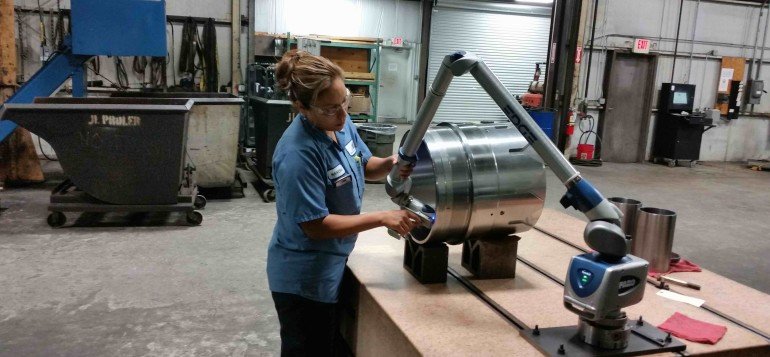So far, the 21st century has proven to be a period of intense change and rapid development in the world of manufacturing. As new technology has driven automation and given birth to Industry 4.0, North American manufacturing has become more financially viable, and a growing number of firms are taking advantage of the economic and political climate to re-imagine their supply lines and production models. Different Metrology Tools can work well for you.
One area where this has had a particularly significant impact is in the tools and machinery manufacturers are using to meet their production needs.Metrology Tools can make things easier for you.
For example, in order to find more flexible solutions to issues like quality assurance, many firms are turning to new tools like portable CMM equipment that help ensure their products meet the highest standards of quality, but which are versatile enough to serve a variety of different functions.
Portable CMMs have quickly become one of the most popular metrology tools on the market, and are frequently used both to supplement more traditional, stationary CMM models like gantry or bridge CMMs, and as a replacement for them. Portable CMMs like ROMER Arms and laser scanners can offer a helpful supplement to standard manual-probe CMMs in part because they gather data much more quickly, which allows technicians to get quick, accurate measurements on parts that are still being produced for quality control purposes.
But portable CMMs are also being put to other uses. In particular, portable CMMs have proven to reliable and useful tools for managing a wide range of metrology-related tasks, such as measuring existing parts to create CAD blueprints that can be used to reverse-engineer these parts.
These functions have made portable CMMs indispensible for manufacturing companies who are exploring new products and building prototypes. At this vital stage, it is often necessary for designers to make manual changes to parts, and with portable CMMs, re-translating the new prototypes into CAD is easy.
Because ROMER Arms, laser scanners, and white light scanners are mobile, they have become an indispensible way of gathering data from parts and products being built and designed off-site (in some cases, they are even seeing use in the construction industry, as a way of gathering precise, accurate data about structures that are still in the process of being built).
The next six years are set to be a turbulent time in the manufacturing industry, and portable CMMs are precisely the kind of tool manufacturing businesses will need to adopt if they want to weather the uncertainty to come.
While President Trump’s administration claims to be re-building the American manufacturing industry by bringing more manufacturing jobs back into North America, it is not yet clear what effect his much-vaunted tariffs will have. And with another presidential election only two years away, the industry may well see more upsets and sudden policy swings in the years to come.
One thing is clear in all of this: the biggest winners will be those firms that are able to respond to the uncertainty of the times by becoming more flexible, versatile, and efficient.
Read Also:






















